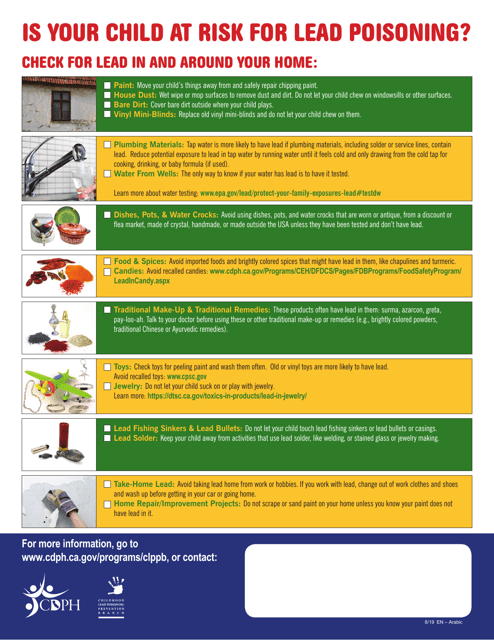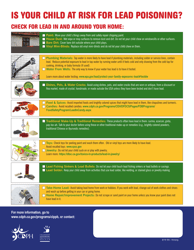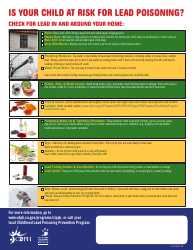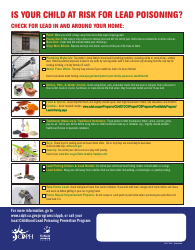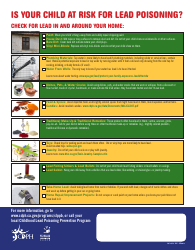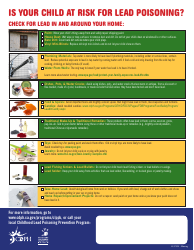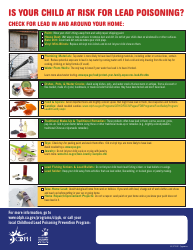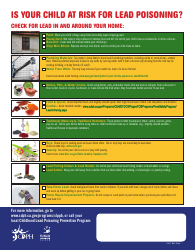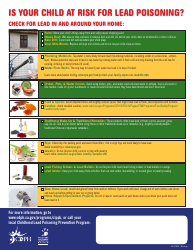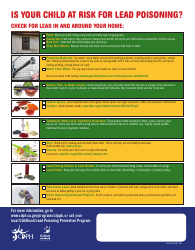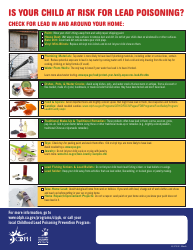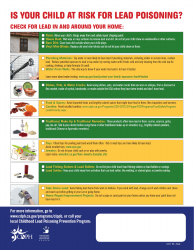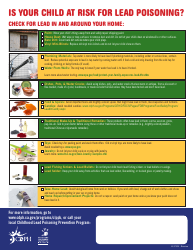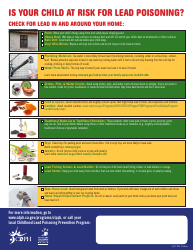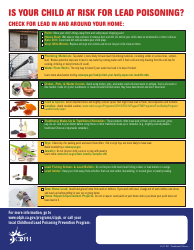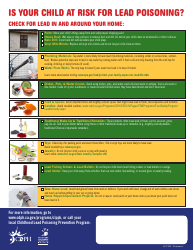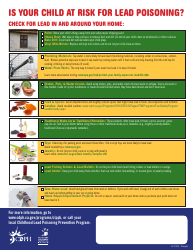Checklist for Lead Poisoning - California (English / Arabic)
Checklist for Lead Poisoning is a legal document that was released by the California Department of Public Health - a government authority operating within California.
FAQ
Q: What is lead poisoning?
A: Lead poisoning refers to the accumulation of lead in the body, which can cause serious health problems.
Q: How can lead poisoning occur?
A: Lead poisoning can occur through the ingestion or inhalation of lead-containing substances.
Q: What are the symptoms of lead poisoning?
A: Symptoms of lead poisoning may include abdominal pain, headaches, fatigue, and learning difficulties.
Q: Who is at risk of lead poisoning?
A: Children, particularly those who live in older homes or are exposed to lead-based products, are at higher risk of lead poisoning.
Q: What can I do to prevent lead poisoning?
A: To prevent lead poisoning, ensure that your home is free of lead-based paint and regularly clean surfaces that may be contaminated with lead.
Q: How is lead poisoning diagnosed?
A: Lead poisoning can be diagnosed through a blood test that measures the level of lead in the body.
Q: What are the long-term effects of lead poisoning?
A: Long-term effects of lead poisoning may include developmental delays, learning disabilities, and behavioral issues.
Q: Is lead poisoning treatable?
A: Lead poisoning is treatable, and treatment usually involves removing the source of lead exposure and providing medications to reduce lead levels in the body.
Q: Can lead poisoning be prevented in children?
A: Lead poisoning can be prevented in children by ensuring that their environment is free of lead hazards and by regularly screening them for lead exposure.
Form Details:
- Released on August 1, 2019;
- The latest edition currently provided by the California Department of Public Health;
- Ready to use and print;
- Easy to customize;
- Compatible with most PDF-viewing applications;
- Fill out the form in our online filing application.
Download a printable version of the form by clicking the link below or browse more documents and templates provided by the California Department of Public Health.
